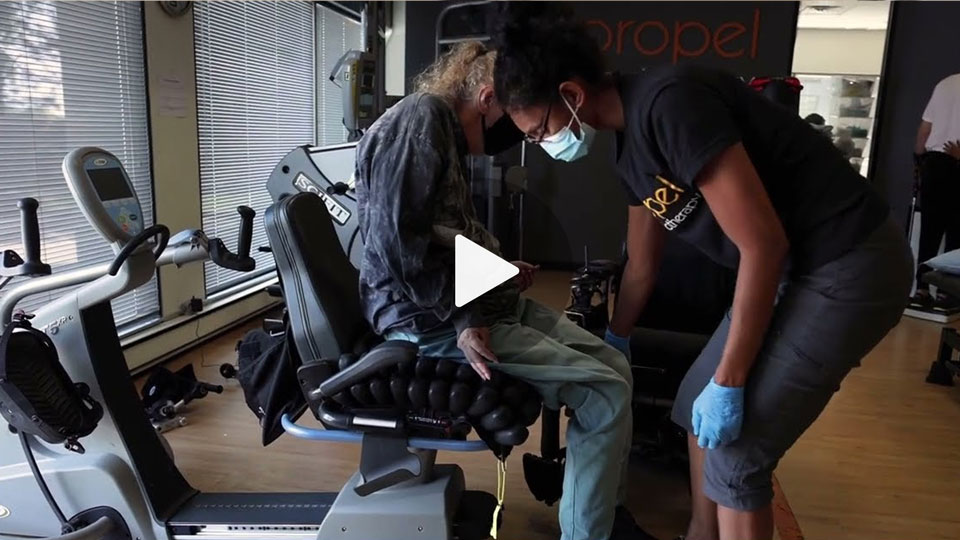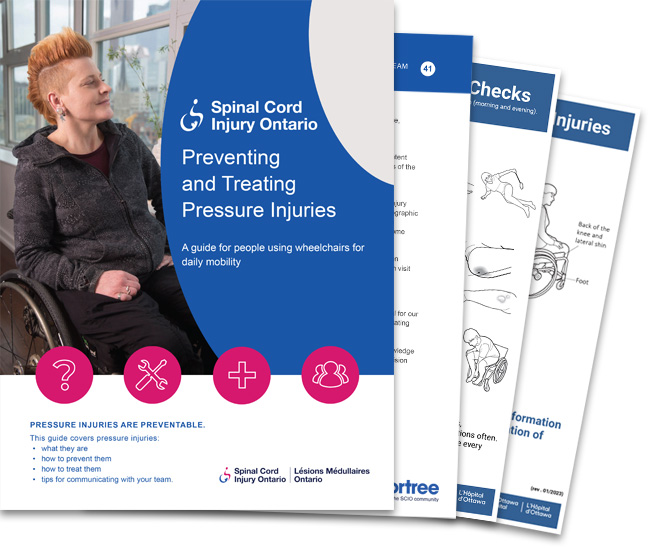In this video we learn about the importance of bone health for people with spinal cord injury. Lora Giangregorio, Professor and Schlegel Research Chair in Mobility and Aging, at the University of Waterloo’s DXA Lab explains osteoporosis, spinal cord injury and strategies to prevent falls and osteoporotic fractures. Ed Jimenez demos his exercise routine, and Kyle Whaley, Physiotherapist and Executive Director of Propel Physiotherapy explains the benefits of strength and transfer training.
This video content was created as part of a project funded by a grant from the Craig H. Neilsen Foundation to Spinal Cord Injury Ontario.
Osteoporosis is a disease characterized by low bone mass and deterioration of bone tissue, which can lead to increased risk of fracture. Osteoporosis has no symptoms: the first indication of osteoporosis is a broken bone. One of the issues in people with SCI is that due to reduced sensation, you may not feel the pain of a broken bone, so the symptoms of a fracture would be things like swelling, bruising, or referred pain. About 1-4% of people with SCI will get a fracture in any given year. Lower extremity fractures are the most common.
If you’ve found this video, you’re probably looking for more information about:
- Common causes of fractures
- Assessing your risk
- Fracture prevention strategies
- Osteoporosis screening.
Fractures can be caused by twisting forces on bone when the leg bones are twisted during a transfer, toes catching on door frames, people in crowds, or other objects, falls out of wheelchair i.e., fall on knees, or bones suddenly hyper flexed in a low velocity fall from a wheelchair. Less commonly, fractures can be caused by forces applied by other people e.g., a support worker rolling a person in bed, twisting their legs, or forcing the leg during a range of motion exercise.
Your doctor can readily identify if you have a high risk of fragility fracture by completing a checklist. Of these fracture risk factors, a prior fragility fracture and a low knee region BMD below the fracture threshold are the strongest predictors of future fracture. Your doctor may order a bone mineral density test. A bone density test determines if you have osteoporosis. The test uses X-rays to measure how many grams of calcium and other bone minerals are packed into a segment of bone. The bones that are most commonly tested are in the spine, hip and sometimes the forearm.
Here are some tips to help prevent fractures:
- Have chair/seating assessed to ensure you are balanced
- Reduce fall risk, use waist strap, straps to keep toes pointing forward not out
- Keep equipment e.g. wheelchair, lift, etc. in good working order
- Discuss your risk and safe movement/transfer strategies with social workers/family/friends/therapists that are helping with your care or transfers or exercise.
If you enjoyed this video about osteoporosis and physical therapy for people with spinal cord injury, please remember to like, share, subscribe, and leave a comment if you have any questions or suggestions. We hope to see you here again soon!






